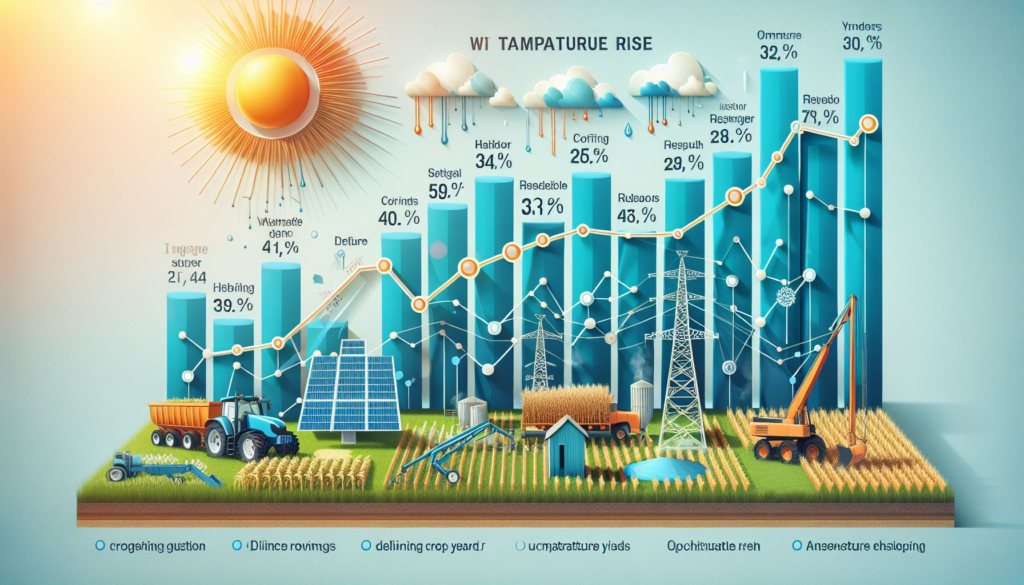Climate change is a pressing challenge with far-reaching consequences for both agriculture and transportation infrastructure. Extreme weather events like droughts, floods, and heat waves disrupt agricultural production and wreak havoc on roads, bridges, and railways. Yet, nature itself offers innovative solutions through the view of biomimicry for climate resilience for building in both these critical sectors.
Nature’s Blueprint: Biomimicry for Climate Adaptation
Biomimicry for climate resilience in this context, focuses on the practice of emulating nature’s time-tested designs and processes, can provide valuable insights for developing climate-resilient infrastructure. By studying how ecosystems adapt to environmental challenges, we can find inspiration for building infrastructure that can withstand and even thrive amidst the changing climate.
Lessons from the Farm: Climate-Smart Agriculture

Agriculture, particularly in regions prone to droughts and floods, has developed a wealth of climate-resilient practices:
- Drought-Resistant Crops: Sorghum and millet, ancient grains known for their ability to thrive in arid conditions, are being rediscovered as valuable alternatives to water-intensive crops like corn.
- Precision Irrigation: Technologies like drip irrigation deliver water directly to plant roots, minimizing waste and maximizing efficiency during droughts.
- Cover Cropping: Planting cover crops like legumes and grasses helps protect soil from erosion, improve water retention, and enhance soil fertility, making it more resilient to extreme weather.
Biomimetic Bridges: Lessons from Nature’s Architects

Climate change poses a serious threat to our infrastructure. But what if the solutions to building more resilient structures are already in nature? Biomimicry for climate resilience explores how we can learn from nature’s architects, like beavers and termites, to create infrastructure that can withstand the challenges of a changing climate.
- Beaver Dams: Beavers build dams with intricate channels and spillways that help regulate water flow and prevent flooding downstream. Engineers are exploring similar concepts for designing flood-resistant bridges and culverts.
- Termite Mounds: Termites create complex ventilation systems within their mounds to maintain a stable temperature and humidity. These principles could inspire the design of buildings and infrastructure that passively regulate their internal environment, reducing the need for energy-intensive heating and cooling.
Real-World Examples: Biomimicry in Action
- Sahara Forest Project: This innovative project in Qatar combines saltwater-cooled greenhouses with solar energy to grow crops in the desert, demonstrating the potential for biomimicry to transform agriculture in arid regions.
- East Japan Railway Company: The Shinkansen bullet train was redesigned with a nose inspired by the kingfisher’s beak, reducing noise and improving energy efficiency.
A Symbiotic Relationship: Agriculture and Transportation
Biomimicry for climate resilience, agriculture and transportation infrastructure are not just parallel challenges, but interconnected ones. Reliable transportation is essential for getting food from farms to consumers, while sustainable agriculture can provide biofuels and other renewable resources for transportation.
The Way Forward: Investing in Nature-Based Solutions

By investing in nature-based solutions and embracing biomimicry, we can build a more sustainable and resilient future for both agriculture and transportation. This approach offers a win-win scenario, ensuring food security, reliable mobility, and a healthier planet for generations to come.
Want to join in improving Critical Infrastructure?
Resources
Organizations:
- The Biomimicry Institute: A leading organization promoting biomimicry for innovation and sustainability. Their AskNature platform is a rich resource for exploring biological strategies and applications.www.idealist.org
- Biomimicry 3.8: A consultancy and innovation firm that helps organizations apply biomimicry principles to create sustainable products, processes, and systems.www.ellenmacarthurfoundation.org
- The Ray C. Anderson Foundation: This foundation supports the development and implementation of biomimicry solutions for environmental challenges, including climate change.wwww.floortrendsmag.com
Thought Leaders:
- Janine Benyus: A co-founder of the Biomimicry Institute and author of “Biomimicry: Innovation Inspired by Nature,” she is a leading voice in the field of biomimicry.www.linkedin.com
- Dayna Baumeister: Another co-founder of the Biomimicry Institute, she is known for her work in biomimicry education and applying biomimicry to organizational design.design.lsu.edu
- Michael Pawlyn: An architect and author of “Biomimicry in Architecture,” he is a pioneer in applying biomimicry to the built environment.
Additional Resources:
- AskNature: A vast online library of biological strategies and designs, searchable by function, organism, or ecosystem.
- Biomimicry Global Design Challenge: An annual competition that invites innovators to develop nature-inspired solutions for sustainability challenges.www.bioengineering.tum.de
- Zoological Society of London:Their EDGE of Existence program focuses on conserving evolutionarily distinct and globally endangered species, many of which possess unique adaptations that could inspire innovative solutions.en.wikipedia.org
By exploring the work of these thought leaders and organizations, you’ll gain a deeper understanding of how biomimicry is being applied to address real-world challenges like climate change and create a more sustainable future.
